Ranked Choice Voting: What is it, and why do we need it?
A Whackadoodle Civics lesson about why Ranked Choice Voting provides better outcomes when looking for candidates that the majority will accept. Plus, it's a great way to decide which movie to show.
Let’s pretend for a moment that I teach at an after school program, and today is movie day. I have thirty students, and five movies. How do we decide which movie to watch?
We vote of course! After all, it’s the American way. And since we live in America, we are most likely to use the voting system Americans typically use. We use what’s called plurality voting, which basically means that whoever gets the most votes wins, even if they did not get a majority of the possible votes.
The following slide, shows you how plurality voting works.
Notice that The Parent Trap has the most votes, with eight. Even though there are twenty-two other votes, if we are using Plurality Voting, those votes get tossed out, and we go with the one movie that received the most votes.
Most Political Parties, Local, and State Governments use Plurality Voting, but not all. Some States and local political parties require something called a Run Off. If nobody received 50% of the vote in the first ballot, they hold a Run Off Election between the top two candidates.
I wonder what would happen if my class held a run off between our top two movies: Raiders of the Lost Ark and The Parent Trap. Let’s find out.
Notice this time, Raiders of the Lost Ark gets more votes. At eighteen votes, it has a clear majority. However, what if I tossed out an even more popular movie too soon by only letting my students pick between the top two movies?
If we want a clear picture of our most popular movie, we need to to check out Ranked Choice Voting, where even if you don’t get your first choice, you have a chance to pick your second, and sometimes even your third choice. Let’s see how it worked with my students.
We begin with the first round of voting, with all five movies in the mix.
The second round of voting begins by removing the movie with the fewest votes, poor old George of the Jungle. Then we ask the kids who voted for George to pick a Second Choice. The table below is what it looked like after out Second Choices were included.
With no clear winner, we move on to consider everybody’s third choice. First, we removed Mulan and Raiders of the Lost Ark, since they both tied for last. Then, we asked the kids who had voted for them to vote for their third choice. Here is what the final ballot looked like:
If we has stuck with Plurality Voting, eight kids would have been happy, and twenty-two board out of their wits.
If we had done a Run Off, eighteen kids would have been happy, but we might have tossed out an even more popular choices too soon.
To ensure that the most people are pleased with the final tally Ranked Choice Voting works every time.
“But what if the final tally was fifteen to fifteen?!” she interrupted.
“Well, then as teacher, I would have flipped a coin.”
“Seems kind of…,” she couldn’t think of the word.
“Arbitrary,” I suggested.
“Yeah, arbitrary.”
“Well, believe it or not, but a lot of political organizations have it written into their bylaws that in the case of tied votes, a coin toss between challengers is acceptable. I’ve seen a coin toss used at least twice.”
She shrugged. “I suppose it’s like having fate cast the final vote.”
“If you are ready, can we get back to my article? I was just getting to the good part.”
“Sure,” she said, and bent again over my shoulder to watch me type.
Can you imagine how our voting outcomes would change if America started to use Ranked Choice Voting?
Well, I can.
One: We might start electing less divisive candidates. Candidates that more people accept, and even like. Candidates that are less radicalized, and more motivated to accomplish something meaningful.
Two: Ranked Choice Voting would certainly help us overcome some of the challenges of a two party system. Most people cast their one vote for the party candidate they most want to win. Any third party, or independent option is usually considered a throw away vote, or a protest vote. But in Ranked Choice Voting, my ballot would not be tossed away if I chose to vote for an unlikely candidate. I would be able to cast that vote proudly, knowing that my second choice would still be counted.
Three: Candidates would have to pay more attention to the entire population. Rather than simply pacifying their base in order to guarantee a plurality win, they would have to start thinking about how to appeal to a wider group of constituents, particularly the constituents who have become dissatisfied with the whole system.
Four: It might change how the media covers our elections. Instead of all their focus and free press centered on the Front-Runner, they might start spend a little more time covering our many options. They might stop pointing out the candidate with a 35% solid base who is destined to win, and spend more time looking at the thirteen other candidates vying for the 65% of voters who haven’t made a decision yet.
Of course, Ranked Choice Voting won’t solve all our voting problems.
We still have to overcome political gerrymandering by making sure our voting districts are created by nonpartisan committees. We need to over hall our campaign finance laws, so we know who is financing our candidates. We need to look for ways to make voting easier, not harder for everyone. We need to overcome the ennui so many voters have come to feel.
I know it’s overwhelming, but if we don’t find a way to elect more people of integrity into our political system, these important changes will never happen.
I heard recently that some in Congress are introducing bills that would Ban Ranked Choice Voting, while others are attempting to Make Ranked Choice Voting the Federal Standard; meanwhile Federal courts have consistently upheld Ranked Choice Voting as a policy choice to implement primary and general elections.
I can’t help but wonder why some politicians are so afraid of Ranked Choice Voting that they want to ban it.
I hate to speculate, but I sure have a good guess. I think that it might have something to do with those eight kids who want us to keep watching The Parent Trap, when the majority of us would rather watch Shrek.

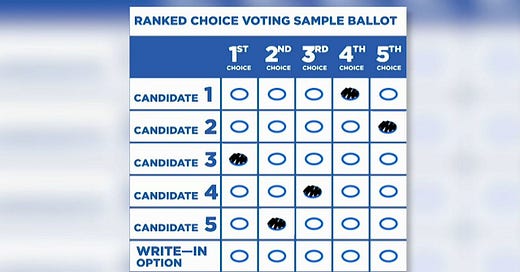


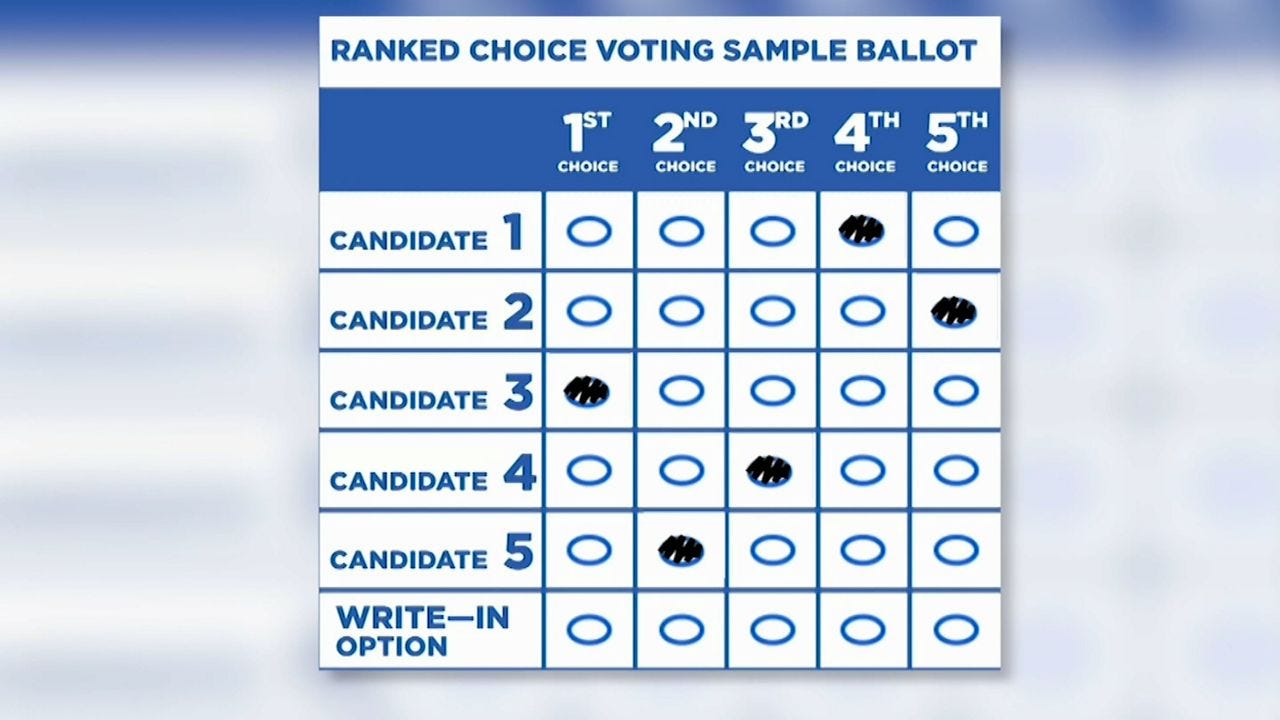
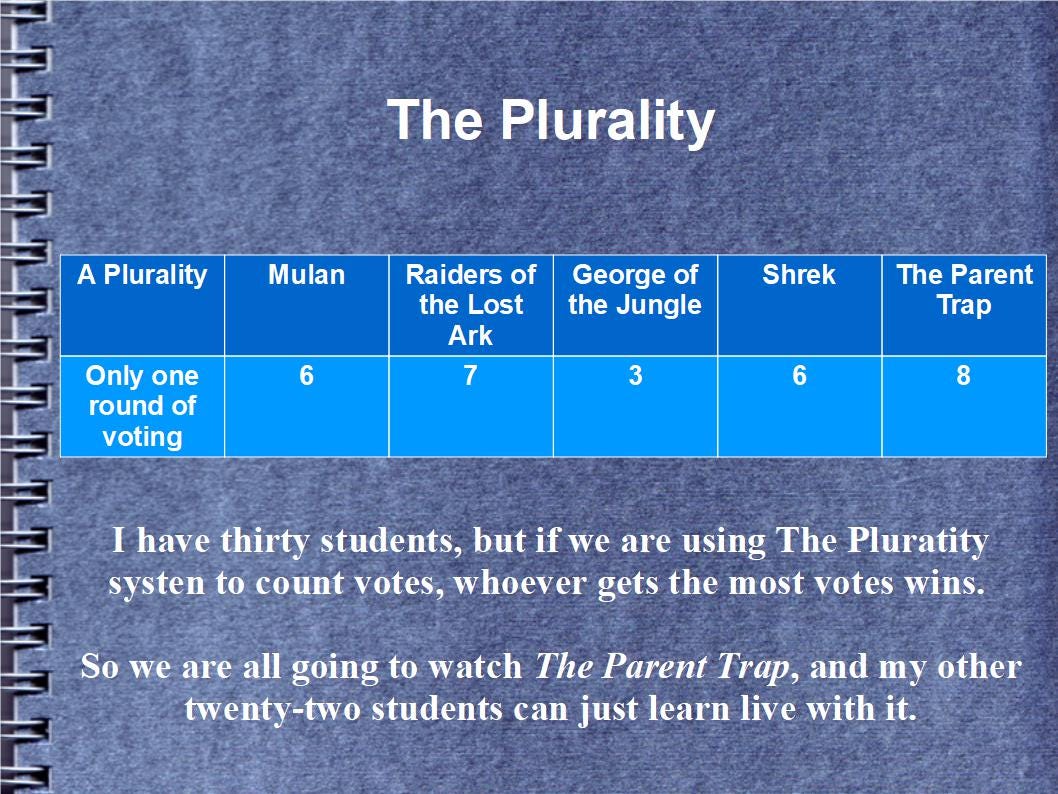

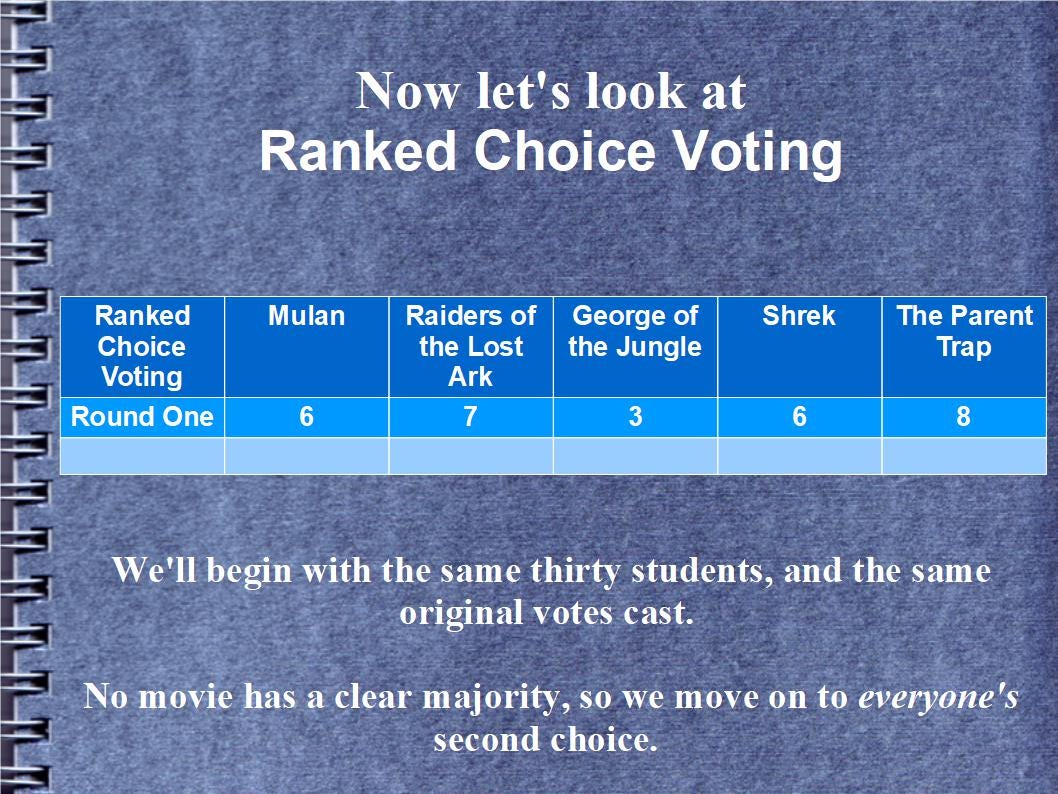
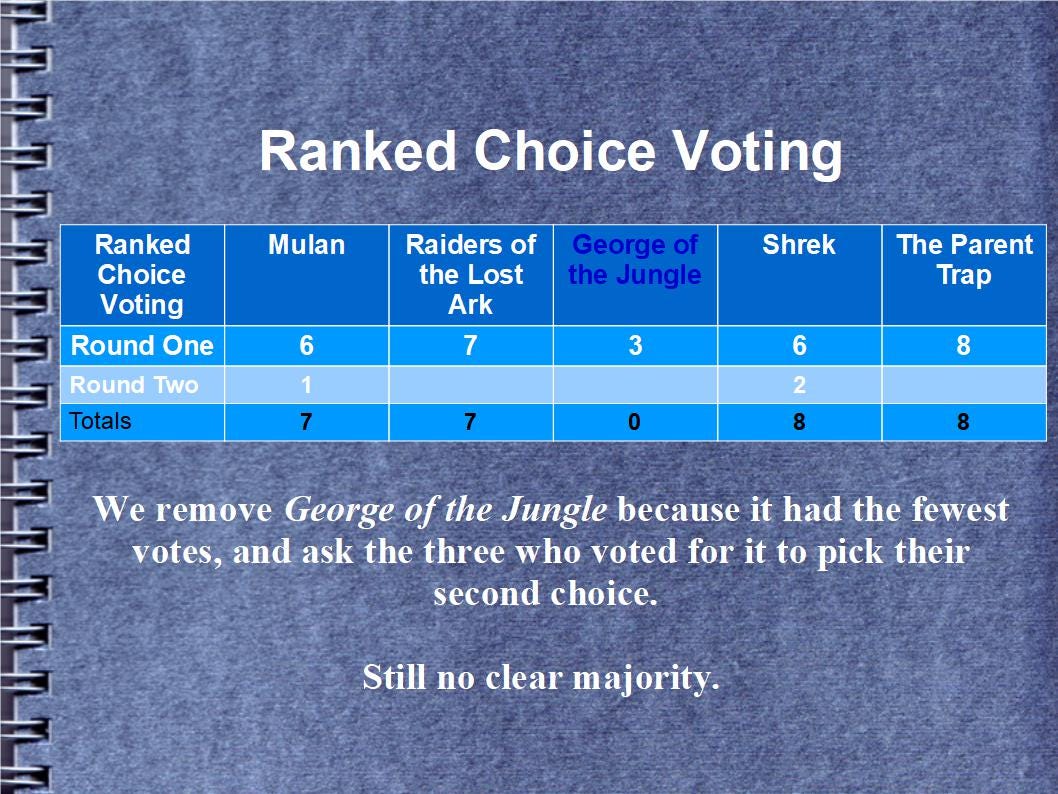

It may feel like a Don Quixote battle, but in this case people are achieving victories. For a full list of those victories, check out the following links:
https://en.wikipedia.org/wiki/Ranked-choice_voting_in_the_United_States#Use_at_presidential_level
https://en.wikipedia.org/wiki/Ranked-choice_voting_in_the_United_States#Use_at_state_and_federal_levels
https://en.wikipedia.org/wiki/Ranked-choice_voting_in_the_United_States#Use_at_local_levels
Plurality voting enables a two party system. Minority parties are at an extreme disadvantage. Power that be want a system that enables them to stay in power. They will do all they can to stay in power. As you say, Pick fights you can influence, This one is a Don Quixote battle.